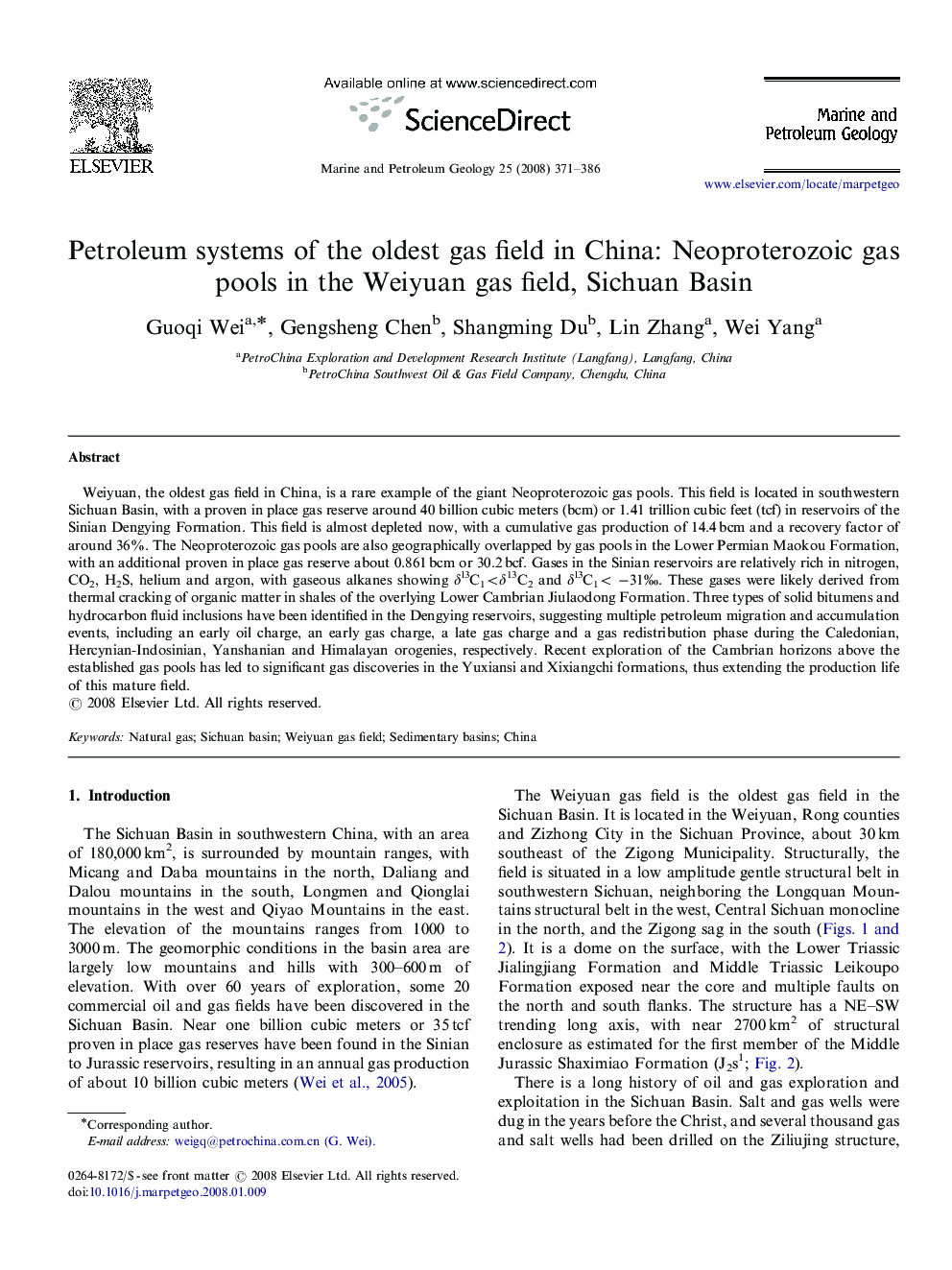| Article ID | Journal | Published Year | Pages | File Type |
|---|---|---|---|---|
| 4696637 | Marine and Petroleum Geology | 2008 | 16 Pages |
Weiyuan, the oldest gas field in China, is a rare example of the giant Neoproterozoic gas pools. This field is located in southwestern Sichuan Basin, with a proven in place gas reserve around 40 billion cubic meters (bcm) or 1.41 trillion cubic feet (tcf) in reservoirs of the Sinian Dengying Formation. This field is almost depleted now, with a cumulative gas production of 14.4 bcm and a recovery factor of around 36%. The Neoproterozoic gas pools are also geographically overlapped by gas pools in the Lower Permian Maokou Formation, with an additional proven in place gas reserve about 0.861 bcm or 30.2 bcf. Gases in the Sinian reservoirs are relatively rich in nitrogen, CO2, H2S, helium and argon, with gaseous alkanes showing δl3C1<δ13C2 and δl3C1< −31‰. These gases were likely derived from thermal cracking of organic matter in shales of the overlying Lower Cambrian Jiulaodong Formation. Three types of solid bitumens and hydrocarbon fluid inclusions have been identified in the Dengying reservoirs, suggesting multiple petroleum migration and accumulation events, including an early oil charge, an early gas charge, a late gas charge and a gas redistribution phase during the Caledonian, Hercynian-Indosinian, Yanshanian and Himalayan orogenies, respectively. Recent exploration of the Cambrian horizons above the established gas pools has led to significant gas discoveries in the Yuxiansi and Xixiangchi formations, thus extending the production life of this mature field.
